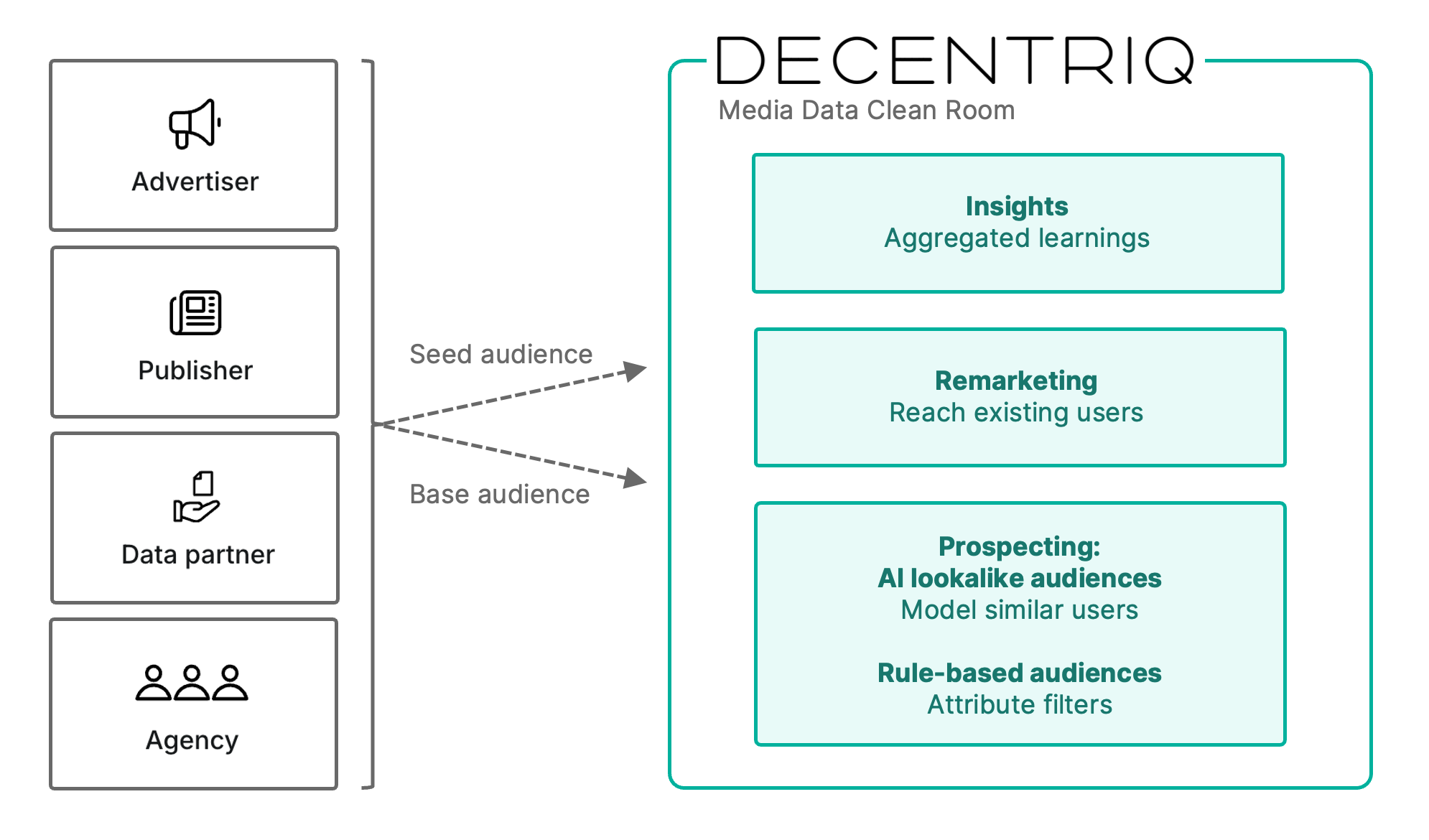Getting started with Media DCR
Media DCRs provide a no-code environment where collaborators can safely combine first-party data to gain privacy-preserving insights and to create target audiences to optimize advertising performance. For other data collaboration scenarios, see the Advanced Analytics DCR.
All processing happens inside verifiable confidential-computing enclaves, preventing all involved parties - including Decentriq and the cloud provider - from unauthorized access to data. Permissions control what actions collaborators can take and what results they can access.
Media DCR use cases and collaboration types
The Media DCR operates on a base audience and a seed audience. While other scenarios are possible, most commonly the base audience is provided by a publisher and the seed audience is provided by an advertiser or data partner. The base audience typically includes attribute information like interest segments or demographics.
The Media DCR supports various collaboration types for common marketing goals:
- Overlap analysis: Calculate the overlap between the seed and the base audience to understand the potential of a collaboration.
- Insights: Gain actionable insights about the users in the seed audience to improve targeting and messaging.
- Remarketing audiences: Re-engage users in the seed audience to drive conversions or increase loyalty.
- AI lookalike audiences: Find new prospects by applying machine learning to identify users in the base audience most similar to the seed audience.
- Rule-based audiences: Find new prospects by filtering the base audience and combining it with other audiences.

A Media DCR collaboration workflow
A typical end-to-end process looks as follows. Note that depending on the selected collaboration types, the actual workflow may include only parts of these steps.
- Create the Media DCR – One participant sets up the data clean room and invites the other collaborators, assigning roles as needed. Your organization needs an active license to create Media DCRs.
- Provision data – The participants assign the appropriate permissions upload their seed and/or base audiences, respectively. The participants check the overlap to ensure the datasets matched successfully.
- Gain insights – Participants with the View overlap or View insights permissions analyze the aggregated metrics to inform campaign strategy.
- Create audiences – Participants with the Create audiences permission build target audiences and collaborate with other participants.
- Activate audiences – Participants with the Export audiences permission export audiences to the chosen activation platform (e.g., ad server or DSP). In a further step outside of the platform, the campaign is then configured to target the exported audiences (e.g. via deal ID) and the campaign is executed.